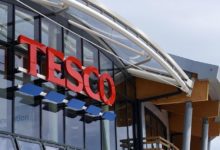What disadvantages does ‘shrinkflation’ bring for retailers?
In an era where profit margins are constantly under pressure, retailers may initially view shrinkflation as a pragmatic solution to maintain profitability, but the term also poses challenges which are often overlooked

In the world of consumer goods, the term ‘shrinkflation’ is rapidly becoming popular, and while it has been traditionally associated with consumers, the phenomenon is also starting to apply to retailers, prompting them to reconsider their strategies and prepare for the emerging challenges in the market ahead.
Gaining popularity around the mid-2000s, shrinkflation has been used to describe the practice of reducing the size or quantity of a product while maintaining, or even increasing, its price.
The practice has become a common strategy for businesses facing increasing production costs. Consequently, the term has mostly been used by consumers who perceive diminishing value in the products they buy. However, shrinkflation poses challenges for retailers that are often overlooked.
In an era where profit margins are constantly under pressure, retailers may initially view shrinkflation as a pragmatic solution to maintain profitability without overtly increasing prices. But beneath the surface lies a series of challenges that can undermine long-term success and customer trust.
What are the downsides for retailers?
First and foremost, shrinkflation inherently involves providing less product for the same price, a practice that consumers often view as deceptive. When customers think that they are receiving less for their money, it can lead to feelings of dissatisfaction and, most importantly, it undermines the trust they have in the retailer.
This loss of trust not only impacts current sales but can also deter potential customers from engaging with the brand in the future. In an age where consumers are increasingly vocal on social media platforms, any perception of dishonesty can quickly spread, damaging the retailer’s reputation.
Shrinkflation can also exacerbate price sensitivity among consumers. As they notice they’re getting less for the same price, they may become more inclined to seek out cheaper alternatives.
The consumers’ increased sensitivity to prices may drive retailers into a cycle of shrinking product sizes in a bid to safeguard profit margins, eventually turning their offerings into commodities. In this situation, the retailer’s capacity to stand out based on factors beyond price, such as quality or service, diminishes, resulting in a decline in brand value.
Another challenge is that shrinkflation introduces complexities into inventory management and pricing strategies for retailers. Managing a diverse array of products with varying sizes and price points becomes more challenging, potentially leading to increased operational costs and inefficiencies.
Moreover, pricing decisions become more delicate as retailers must balance the need to maintain margins with the risk of alienating price-sensitive consumers. Any mistake in pricing can have ripple effects throughout the supply chain, affecting supplier relationships and profitability.
Furthermore, as product sizes shrink, consumers may struggle to accurately assess the true value of different brands and products.
This lack of transparency can interfere with competition and innovation within the market, as consumers may gravitate towards larger, seemingly better value offerings without fully considering other factors such as quality or brand reputation.
In the long run, this can lead to a less dynamic and innovative retail landscape, to the detriment of both consumers and retailers.
Lastly, beyond these immediate challenges, shrinkflation poses broader risks to the sustainability of the retail industry. By focusing solely on short-term profitability through cost-cutting measures like shrinkflation, retailers risk neglecting investments in areas critical to their long-term success.
This focus on cost reduction can set back the development of innovative products, investment in customer experience initiatives, and the development of a skilled workforce. In doing so, retailers may undermine their ability to adapt to changing consumer preferences and competitive pressures, ultimately jeopardising their relevance in the market.
How to move forward
In the face of these challenges, retailers must adopt a more holistic approach to managing cost pressures while maintaining customer trust and loyalty. Rather than relying solely on shrinkflation as a quick fix, they should explore strategies that deliver sustainable value to both consumers and the business.
One such approach is to emphasise transparency and communication with consumers. By openly disclosing changes in product sizes or quantities and articulating the reasons behind such adjustments, retailers can increase trust and mitigate the risk of backlash. Additionally, retailers can differentiate themselves by focusing on quality, innovation, and customer service, rather than engaging in a race to the bottom on price alone.
Moreover, retailers should prioritise investments in technologies and processes that drive efficiency and agility throughout the supply chain. By leveraging automation and collaboration tools, retailers can optimise inventory management, pricing strategies, and operational processes, thereby mitigating the impact of cost pressures without resorting to shrinkflation.
Ultimately, the disadvantages of shrinkflation for retailers extend far beyond short-term profit considerations. By undermining consumer trust, distorting market signals, and hindering long-term sustainability, shrinkflation poses significant risks to the viability and competitiveness of an increasingly challenging landscape.
To succeed in this environment, retailers must adopt a strategic, customer-centric approach that balances cost pressures with the delivery of value and innovation.











